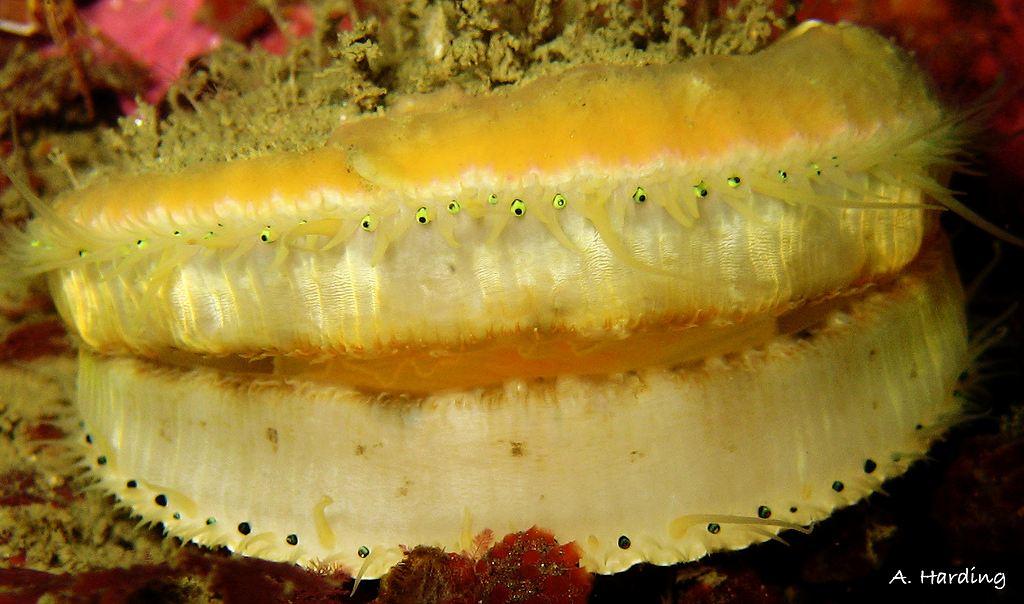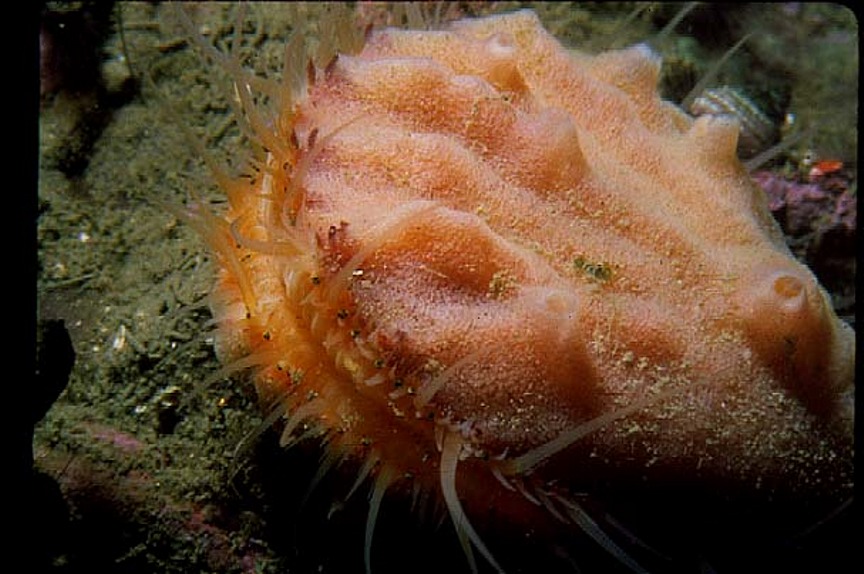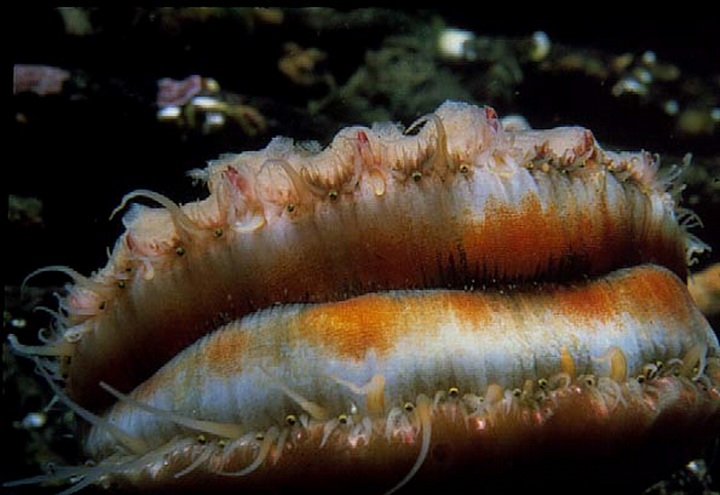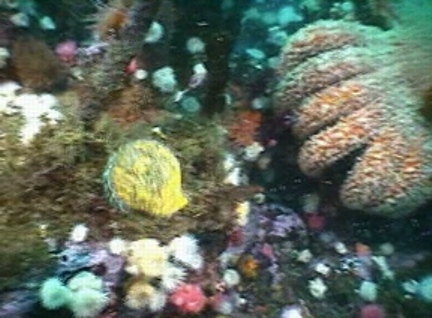- A swimming scallop with a pink encrusting sponge.
- The mouth of the scallop. Note the blue eye-spots around the margins.
- The swimming scallop from the video above.
The swimming scallop is closely related to clams, oysters and cockles. Unlike some of its relatives, the swimming scallop is not sessile. The ribs of the swimming scallop are rendered rasplike by the presence of curved spines. The shell can grow up to 5 – 6 cm in height. They have beautiful, green iridescent and almost luminous eyes called ocelli that are found around the edge of the mantle in both valves. The ocelli are sensitive to light intensity and are rather complicated but do not form images. They also have sensitive tentacles that project out of the edge of the mantle.
They are usually found in subtidal areas and sometimes in shallow water. They live at depths ranging from 2 – 150 m.
Swimming scallops normally lie with their right valves against the substratum, and they may be attached periodically when they are younger by means of a byssus, a fine elastic fibre as in that secreted by mussels. Scallops are free spawning organisms. Reproduction is done through the release of sperm by males and eggs by females into the water.
Swimming scallops are filter feeders. They feed with the shell agape as it the picture above.They process water, using their ctenidia (or gills) to collect microscopic food and Oxygen from the water.
Sometimes spontaneously, and just about always when menaced by a predator, such as certain sea stars (Pisaster and Pycnopodia). They swim by a sort of jet propulsion, clapping the valves together and forcing water out through openings on both sides of the hinge. This shows in the video when the Pycnopodia is brought close to the scallop. The scallop senses the pycnopodia by a chemical sensor. The swimming scallop also swims away when there is a change in environmental conditions.
Swimming scallops are usually colonized by sponges, mostly on the left valve, that form thick coatings. The sponges provide camouflage for the scallop as well as defense against predators. The sponge’s porous nature hinders potential predators, such as sea stars from getting a good grip on the scallop, and they may also provide a repulsive chemical odor. This shows biological mutualism, where both organisms benefit in the symbiosis.
References:
Kozloff, E. N. Seashore Life of the Northern Pacific Coast .4th Edition (1996). University of Washington Press. 539 pages.
Kozloff, E. N. Marine Invertebrates of the Pacific Northwest. (1996). University of Washington Press. 370 pages.
Domain Eukarya
Kingdom Animalia
Phylum Mollusca
Class Bivalvia
Order Ostreoida
Sub Order Pectinina
Family Pectinidae
Genus Chlamys
Species hastata
Common Name: Swimming Scallop
Other Members of the Phylum Mollusca at Race Rocks.
and Image File |
 The Race Rocks taxonomy is a collaborative venture originally started with the Biology and Environmental Systems students of Lester Pearson College UWC. It now also has contributions added by Faculty, Staff, Volunteers and Observers on the remote control webcams. The Race Rocks taxonomy is a collaborative venture originally started with the Biology and Environmental Systems students of Lester Pearson College UWC. It now also has contributions added by Faculty, Staff, Volunteers and Observers on the remote control webcams.
Victoriano de Jesus PC year 28 |




